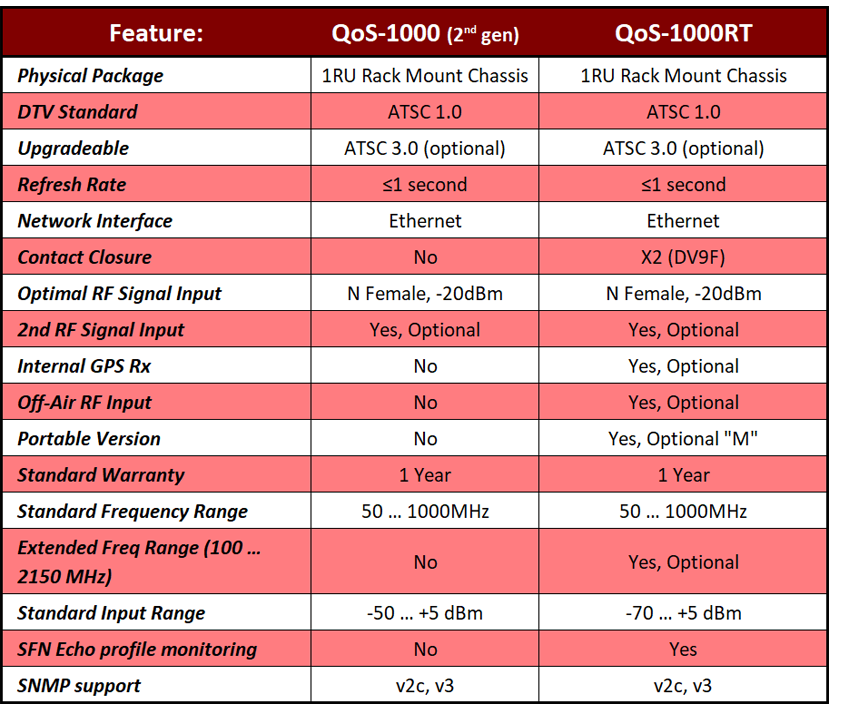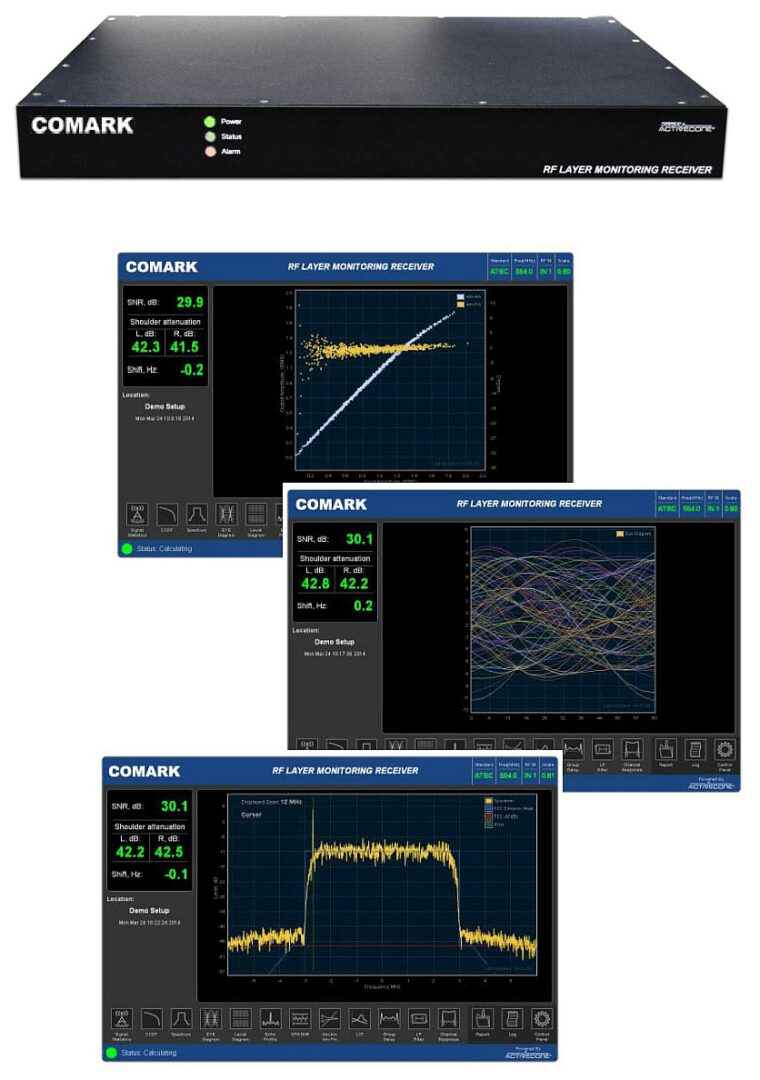QoS-1000 (2nd Gen) & QoS-1000RT
RF Layer Monitoring Receivers
The QoS-1000 2nd gen & QoS-1000RT allows engineers to cost-effectively monitor the system performance of any ATSC 1.0 transmitter or repeater site. They are ideally suited for remote monitoring applications of a transmitter system or can even be used as a stand-alone unit during design verification and production tests. Both models are software upgradeable for use with ATSC 3.0. The table below shows the main differences between the two models.

Using high precision demodulation and signal processing, the QoS-1000 2nd gen & QoS-1000RT analyzes the RF signal and provides user metrics including Symbol and Constellation diagrams as well as RF spectrum, RF shoulders, MER/SNR, and frequency response / group delay. The QoS-1000 2nd gen & QoS-1000RT both include an event and alarm log with user-defined parameters and thresholds.

QoS-1000 2nd gen & QoS-1000RT both have a built-in web server that hosts our user-friendly Graphical User Interface (GUI) providing a window into the heart of the RF signal. Web GUI features enhanced tools set for measuring and analyzing graphical data. Local or remote interface to the unit is via a built-in Ethernet port. The QoS is available in multiple versions to support ATSC, DVB-T, or ISDB-T worldwide DTV standards. Both models support a firmware self recovery means for remote upgrade.


